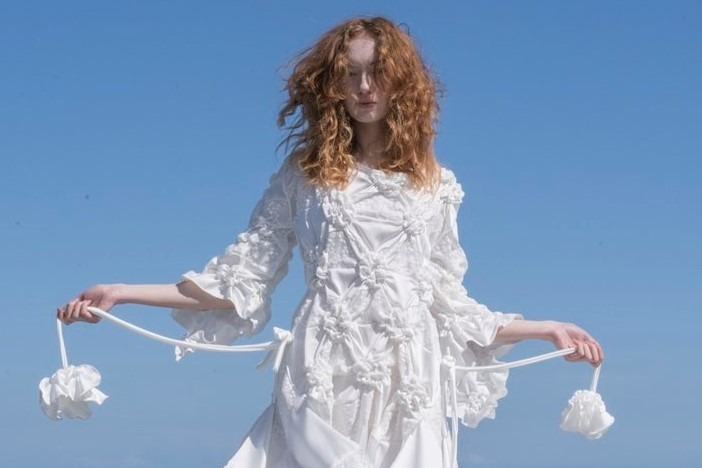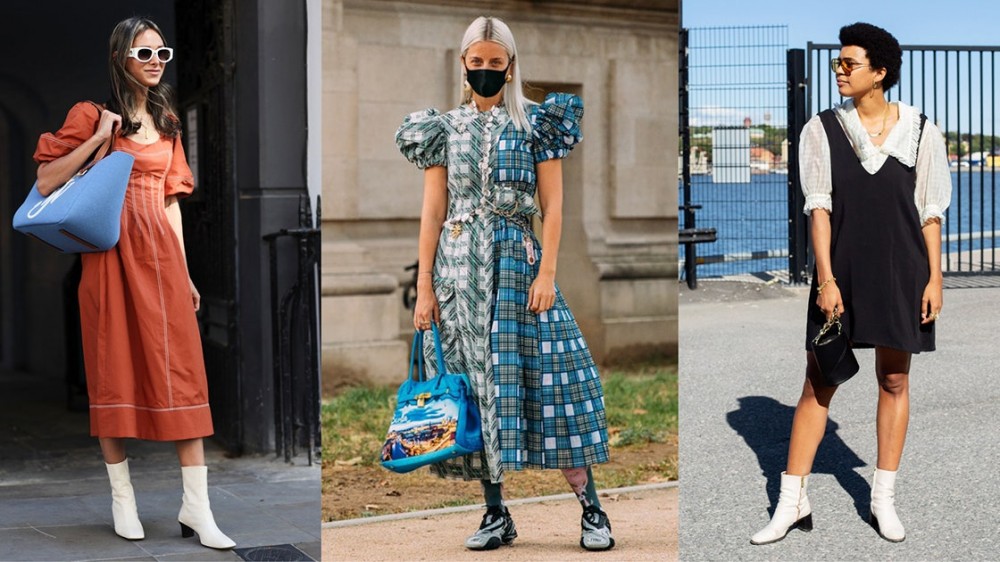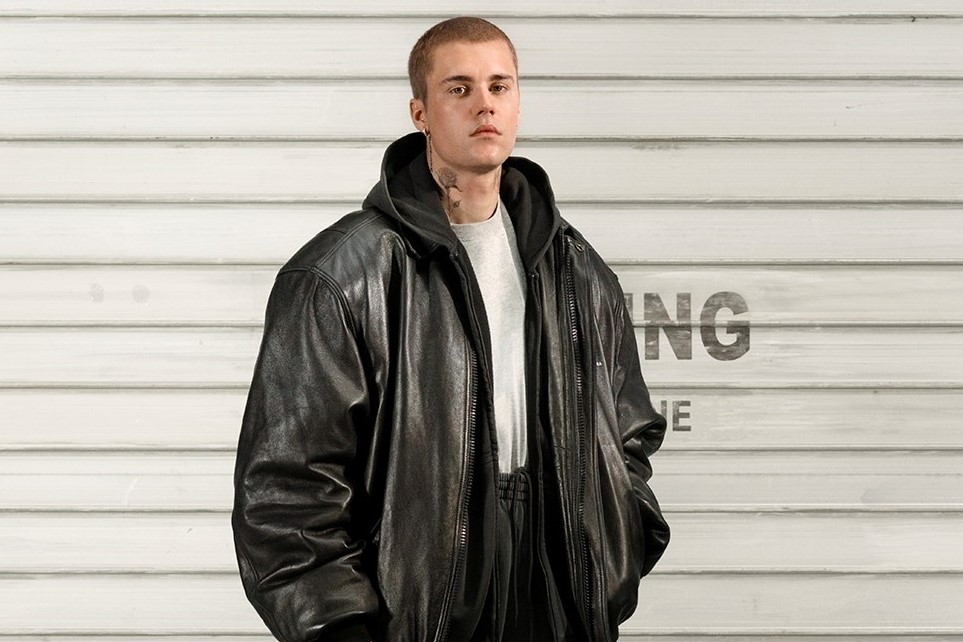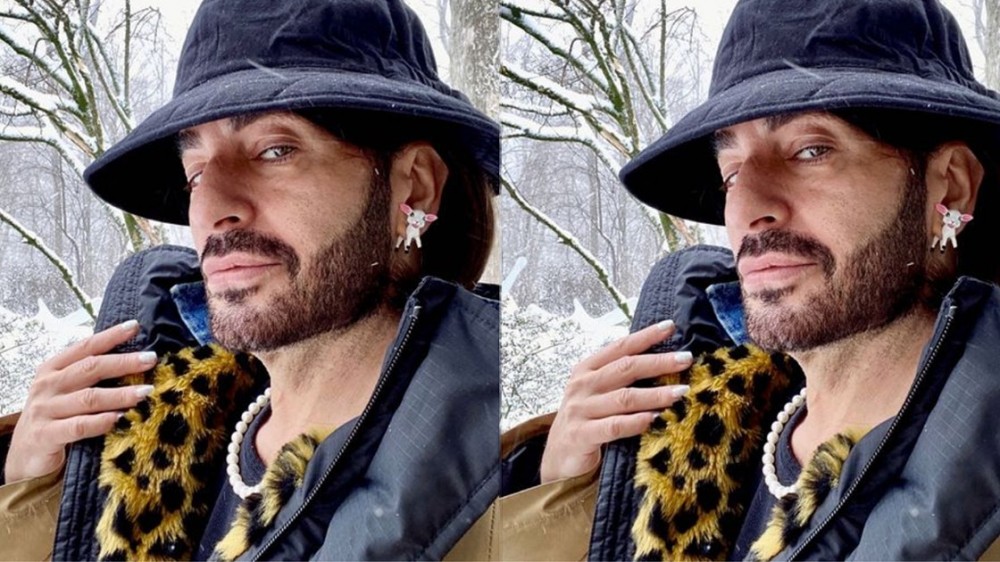
Róisín Pierce is the Galway-born designer turning darkness to light
With past collections drawing inspiration from Ireland’s Magdalene Laundries and the Repeal The Eighth campaign, Pierce stitches stories of women’s resilience and strength into every garment she makes
Each of Róisín Pierce’s diaphanous dresses and flowing, frothy blouses is imbued with a gorgeous sense of lightness, so it’s hard to fathom that Ireland’s Magdalene Laundries and the Repeal the Eighth campaign have served as the surprisingly heavy inspiration for past collections. For Pierce, however, clothing serves as a way to shed light on the issues affecting women both in her home country and around the world, as she deftly stitches stories of their resilience and strength into each beautiful garment.
Leaving Galway behind to study at Dublin’s National College of Art and Design, the rising designer quickly found she had an affinity for fabric manipulation and texture – so much so, that she soon decided her clothes would be crafted using only white materials. In an oversaturated industry full of bold, in-your-face designs jostling for attention up and down your Instagram feed, Pierce’s cut through the noise – her unique approach, attention to detail, and commitment to preserving traditional craftsmanship singling her out as the winner of Chanel’s inaugural Métiers d’Art Prize in 2021.




Now with an LVMH Prize nomination under her belt to boot, Pierce drops a new series of images celebrating her latest collection, Two For Joy. As its title may suggest, this offering feels buoyant, circling around nostalgic, ‘golden-tinged’ memories from being a kid growing up in Galway. “When I look back and think about them, they’re accompanied by these beautiful, bright, glistening visuals,” she explains. “I had a strong desire to embed and evoke joy with the pieces, and to capture this happiness in design and craft for others to experience.
As the Two For Joy images drop, Pierce discusses her early discovery of haute couture, her unique approach to fashion, and whether she’s ever going to introduce colour into her collections (spoiler: she just might, you know).
So first of all, tell me about the first moment you understood the power of clothes?
Róisín Pierce: I’ve always had a very close relationship with clothing and used them to portray a message or narrative from a really early age. I used objects and clothing to express myself, and also to take me out of my ordinary, everyday life. And I’ve always been interested in the classic codes of femininity [and how they are expressed through clothes].
What made you want to pursue a career in fashion?
Róisín Pierce: The love of creation. I loved the idea of making things with your hands and seeing what magic could emerge.
Were there designers you looked up to, or any particular designers you loved?
Róisín Pierce: When I was growing up in Galway, I felt quite removed from the fashion world, although I was surrounded by clothes and making textiles with my mother. In my early teens, I fell in love with haute couture. I used to buy a magazine called Hello! Haute Couture, and it printed almost A4 size images of the couture shows. My favourite bit was of course the fabrics. I loved that a whole mood could be created with the textiles – this whole world of beadwork, and different fabric manipulations, and different fabrications applied in different ways. I grew up admiring luxury French houses like Dior and Chanel, which I always looked at in great detail.
“In my early teens, I fell in love with haute couture. I used to buy a magazine called Hello! Haute Couture, and it printed almost A4 size images of the couture shows. My favourite bit was the fabrics. I loved that a whole mood could be created with the textiles – this whole world of beadwork, and different fabric manipulations, and different fabrications applied in different ways” – Róisín Pierce
How does your Irish heritage play into your collections?
Róisín Pierce: In many ways! Naturally, the inspiration for the majority of the collections have been inspired by our history, and particularly by the difficult relationship between religion and femininity and womanhood, in Ireland. The techniques we focus on are a contemporisation of traditional Irish crafts. We don’t want to just take from the past, we want to bring new innovation to our heritage and history. I want to keep these crafts and skills alive through my work.
As you mention, you draw inspiration from women’s rights issues within Ireland a lot within your collections – from the Magdalene Laundries, through to the Repeal the Eighth campaign a few years ago. What’s important for you, as a woman creating for women?
Róisín Pierce: I want people to feel good about themselves and to give them joy through clothing. Although my collection topics can stem from strong political narratives, I’ve always wanted the finished product to feel light and otherworldly although they carry these messages of women’s rights and women’s roles. These are the stories that brought these pieces to life, but the clothes are ultimately created to bring joy. I want my clothes to be pieces that people are excited to put on when they get dressed.
Do you have anyone specific in mind when you are designing?
Róisín Pierce: No, I don’t have one person in mind. I’m designing for everyone that wants to wear something special.
You were one of the finalists in the running for this year’s LVMH Prize. What was that experience like?
Róisín Pierce: It was a huge honour – the wealth of talent in the competition, the creativity, and the dedication all of the designers show. Hearing their stories and journeys was really inspiring. The whole experience was so inspiring – I came away just wanting to create more.
Let’s move on to your latest collection. Where did you find inspiration for it this season, and for the campaign too?
Róisín Pierce: Two For Joy takes a playful approach to artisanal techniques, craftsmanship, and experimental, zero-waste construction, exploring the endless possibilities of creation. It’s all about exploring joyous childhood memories, these nostalgic, golden-tinted moments of early creative discovery – when I look back and think about them, they’re these beautiful, bright, glistening visuals. I had a strong desire to embed and evoke joy in the pieces, and to capture this happiness in design and craft for others to experience.
The campaign was a collaboration with Jackie Nickerson, which we’d been discussing for a while. We shot the collection in my home country for the first time ever, and it was also my first time on location – and such a beautiful one at that. There’s such strength in the photos. I loved seeing the collection reimagined in a new way, and it was so inspiring to work with Jackie.
“My inspiration usually comes to me quite organically, in many forms. It can be a sentence someone said or the way light hits something, as well as the exploration and sampling process itself” – Róisín Pierce
How in general do you find inspiration – what last made you feel really inspired?
Róisín Pierce: My inspiration usually comes to me quite organically, in many forms. It can be a sentence someone said or the way light hits something, as well as the exploration and sampling process itself. I can have a strong connection to it, or it can be something that has made me feel or think differently. Lately, I’m inspired by a new development within fabrications which uses smocking and crochet to create a texture that ends up looking like glistening jewellery. I’m really excited to get back to developing it!
You work in a palette of mostly white. Can you talk me through why? Do you find it liberating or limiting, and as your work evolves, do you see yourself introducing colour?
Róisín Pierce: It’s a dichotomy – working in all-white is both extremely limiting and liberating. It references Irish women’s craft, such as Mountmellick embroidery work, in which everything is created in all-white so focus is on the craft itself. For me, it’s a brilliant way to work as it allows for strong concentration on cut, silhouette, and textures, and for the viewer, or wearer, I think it lets you focus on the little intricacies that would otherwise get lost if I were to work in colour or pattern. But actually, colour is certainly on the cards – it’s just the timing of when and the designs that I am unsure of.



